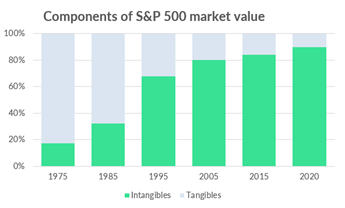Intellectual Property
University Intellectual Property Policy
Ontario Tech University has a creator-owned IP Policy. All academic personnel own the intellectual property (IP) they create in the course of their teaching, research and other scholarly activities. For the most part, inventions and other IP created in the course of research will be jointly owned by the faculty member and his or her students and postdocs.
The rights to IP created by non-academic personnel, such as technicians and contract employees, are owned by the university. These rights are clearly specified in the employment contract of non-academic personnel.
The ownership of IP created during an externally-sponsored or contract research activities may be determined in whole or in part by regulations of the sponsor or the terms of the contract.
What is IP?
IP is a category of property that includes intangible creations of the human mind. They are considered intangible assets.
Creations consist of inventions, designs, literary and artistic works, symbols and logos used in commerce.
Each intangible creation has a different type of protection, which prevents others from use or implementation without consent.
Examples of IP include:
- Patents (inventions)
- Copyright (literary and artistic works)
- Trademarks (sign used in commerce)
- Industrial designs (aesthetic aspect of an article)
- Trade secrets (confidential information that may be sold or licensed)
- Integrated circuit topographies (3D circuit designs in electronics)
- Plant breeders' rights (new varieties of plants)
Further details are available on the World Intellectual Property Office (WIPO) website.
To learn more about What is IP, watch this short video by the Canadian Intellectual Property Office:
Why is IP important?
Over the past 40 years, businesses have started investing heavily in intangible assets, and secured the exclusive rights to these through IP protection.
Over time and with technological breakthroughs (e.g. the Internet), tangible assets such as buildings, machinery, equipment and product inventories have experienced a decline in favor of intangible assets.
Ontario Tech University prides itself on being at the forefront of the technological advances and addressing real-world problems. IP developed at the university attracts new industry partners, create jobs via start-ups, and provides benefit to our society.
Here is a breakdown showcasing a steady increase over the years of intangible versus tangible assets in S&P 500 companies:

Image from Canadian Intellectual Property Office
What is background IP? What is foreground IP?
Background IP refers to any IP that has been developed prior to the start of a project. Whereas, Foreground IP is defined as the IP created during the project. Foreground IP is also referred to as Project IP.
Who is a creator? Who is a contributor?
A creator is someone that has made an inventive contribution towards the IP. An inventive contribution is defined as a contribution to the conception of the IP. In context of patents, any person that contributed towards any of the claims in the patent should be included as a creator/inventor.
A Contributor is someone that has worked in various roles on the project but did not provide inventive contribution.
Here are some examples on how to tell the difference between a Creator and a Contributor:
Creator:
- Conceives the idea, or is part of the discussion that did
- Identifies the significance of a result which led to the invention
- Follows the instructions of a supervisor using initiative and creativity to take the idea towards the inventive concept
- Provides solutions to problems
Contributor:
- Builds or tests the invention after the idea has been conceived
- Puts forward a hypothesis on observed results
- Carries out instructions of a supervisor without making significant changes over and above those instructions
- Acts as a supervisor on the project but does not contribute to the inventive concept
Do I need to disclose to the university any IP that I create?
According to our IP Policy, Academic Personnel who have developed IP which they intend to commercialize must inform the university in advance, via IP disclosure. Such disclosure must include the nature of the IP, the names of all co-creators, the source of funding for the research project out of which the intellectual property emerged, and any other relevant information. At the time of disclosure, the university will inform the creator(s) that they may commercialize the intellectual property themselves, or may offer it to the university to commercialize, and will provide sources of information about those options.
If I intend to commercialize on my own, what are my obligations towards the university for any IP that I create?
Per Ontario Tech IP Policy, When creator(s) elect to commercialize the IP on their own, they assume responsibility for the commercial activities and any associated legal expenses. Any commercial agreement(s) must contain full and complete releases and indemnification in favor of the university, with respect to the commercialized IP. Such creator(s) will arrange with the University a revenue sharing framework as per IP policy. Any such IP shall remain subject to the license and other rights of the university under these policies.
If I intend to commercialize on my own, what are my obligations towards third parties for any IP that I create?
If your IP was part of a collaboration, there might be obligations to a third party that is defined by the contract. These obligations could limit or prevent you from commercial exploitation of the IP. If your IP is related, or an improvement of an IP that was created during a collaboration, there may be limitations too.
If your IP was funded by agencies that do not take stake in the IP, and there are no third parties involvement, then it is safe to assume there are no obligations to third parties.
It is best to speak to the IP Officer to understand your rights and obligations around any IP that you intend to commercialize.
Relevant Forms and Policies
- IP Policy
- Conflict of Interest in Research Policy
- IP Disclosure Form - Software & Copyright
- IP Disclosure Form
